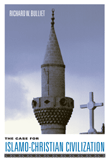
Having just returned from the annual conference of MESA (Middle East Studies Association) in Washington, D.C., my eyes are still glazed from all the new titles in the book exhibits. I doubt there was a major publisher represented that did not have a new offering with “Jihad,” “Post 9/11,” “Islamism” or just plain “Terrorism” on prominent display. The pundits are having a field day, embedded journalist and intrepid academics alike. The greatest volume of texts by a single author went to Bernard Lewis, who had so many titles on display at the Oxford booth that this reputable forum might be in danger of becoming the Oxford-Lewis University Press. Several books back, not that the content varies much, Lewis hit the market right after 9/11 with his What Went Wrong?,a typical Lewisite (following the common media usage of Shiite) rehash lamenting the fact “they” are not as curious about “us” as “we” are about “them.” There are many valuable books now available that counter this iconic neocon imagination of the Middle East. But one book that I fear may be lost in the constant shuffle of new titles is historian Richard Bulliet’s The Case for Islamo-Christian Civilization (Columbia University Press, 2004).
Responding to simplistic, secularly apocalytpic scenarios of civilizational clash by Bernard Lewis and Samuel Huntington, Bulliet advocates a fresh look at the history he knows so well as a medievalist in tune with current history in the making in the Middle East and wider Islamic world. In presenting his case, with the precision of a seasoned trial lawyer, Bulliet examines the process of conversion, ecclesiastical authority, heretical communities, separation of church and state, reactions to tyranny, impact of print culture, mass educational goals and Cold War mentalities. If you do not yet own this book, click here and buy it right now. Don’t take my word for it, but consider the historical brief announced in the following brief excerpts…
“The historical development of Western Christendom and Islam parallel each other so closely that the two faith communities can best be thought of as two versions of the same socioreligious system. For eight centuries, the pathways of development led in the same direction and occasionally virtually overlapped one another (p. 15).”
“Latin Christians and Middle Eastern Muslims experienced common challenges in parallel time frames. However, they reacted to these challenges in different ways, and the variations in their responses had consequences in terms of how they responded to the next set of challenges. These divergences accumulated and contributed to a parting of the ways that became evident in the fourteenth through sixteenth centuries. From that time on, Western Christendom, with its overseas colonies, and Islam, now including mass Muslim societies outside of the Middle East, followed trajectories that differed markedly, like fraternal twins that are almost indistinguishable in childhood but have distinctive, and not necessarily compatible, personalities as adults. Where in the earlier centuries the sibling traditions moved thought their life stages in astonishingly similar ways, after 1500 they began to act as rivals in a worldwide drama. Yet the ways in which they played their roles as rivals still reflected their sibling character and their functioning within a common system: Islamo-Christian civilization (pp. 15-16).”
“The lesson of what went on is that Islam cannot be dismissed as a factor in the public and political life of Muslims. To be sure, millions of Muslims live secular lives and deplore religion in politics; but political cultures change only slowly, the wishful thinking of secularists on both sides of the divide between Islam and the West notwithstanding. Railing against Islam as a barrier to democracy and modern progress cannot make it go away so long as tyranny is a fact of life for most Muslims. The ghastliness of international terrorism in the name of Islam, and the bleakness of lives lived under the most oppressive of Muslim behavioral rules, cannot conceal the fact that in rallying Muslims against domestic tyranny and foreign oppression, the new religious authoritieis, whether peaceful or violent, are acting according to a centuries-old political dynamic designed to protect Muslims from tyranny. Finding ways of wedding this protective role with modern democratic and economic institutions is a challenge that has not yet been met. The path to the future cannot skirt the Islamic past (p. 93).”
Daniel Martin Varisco